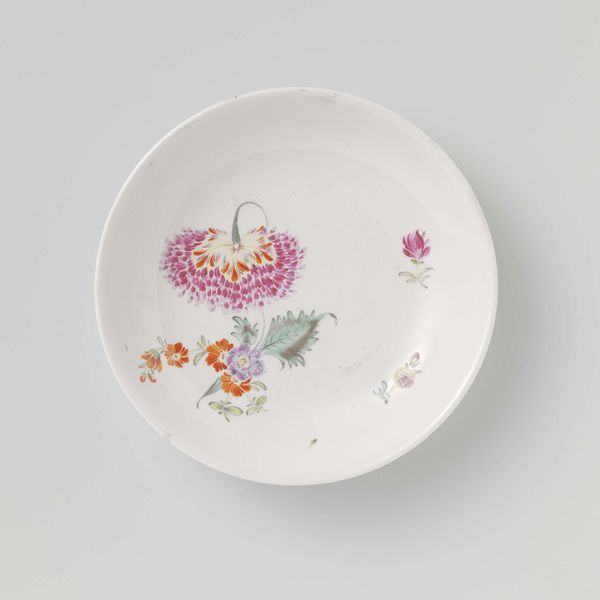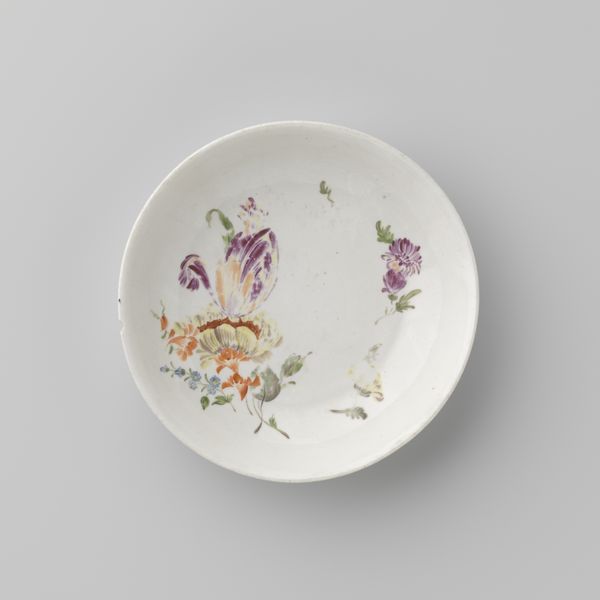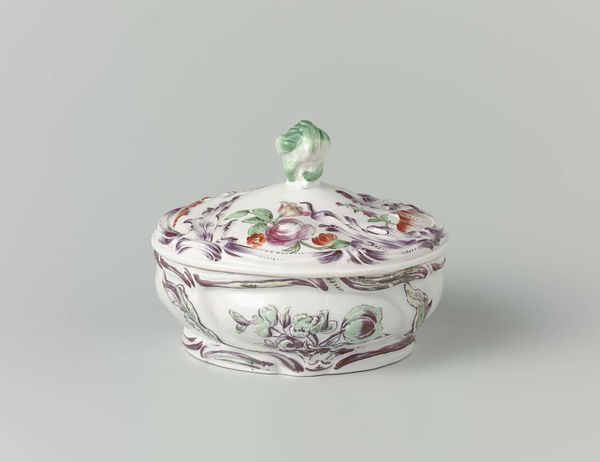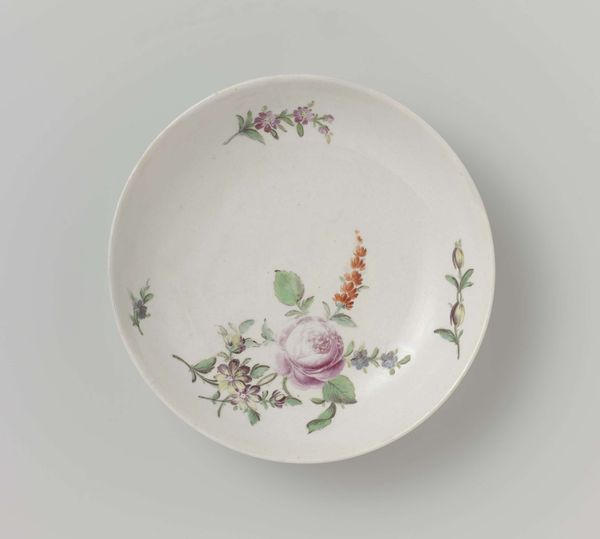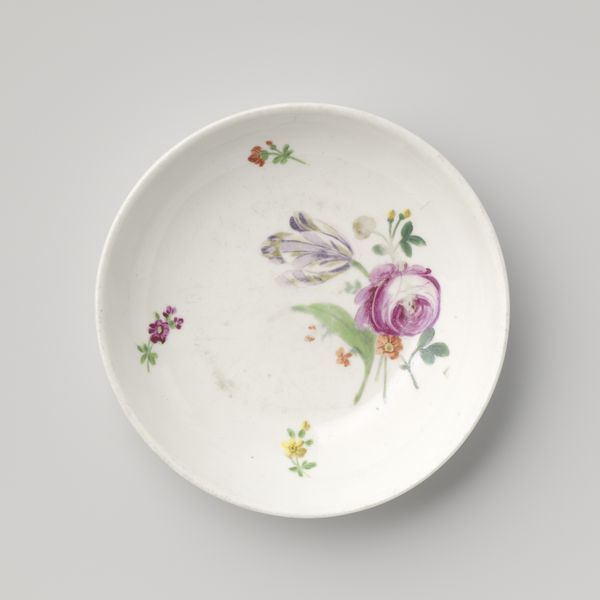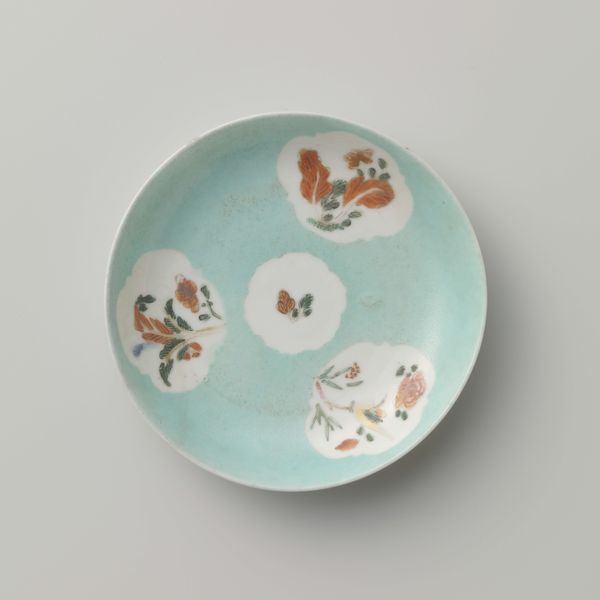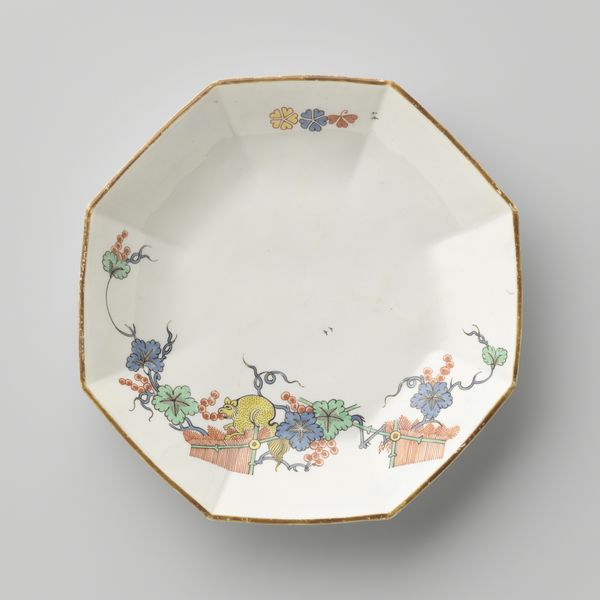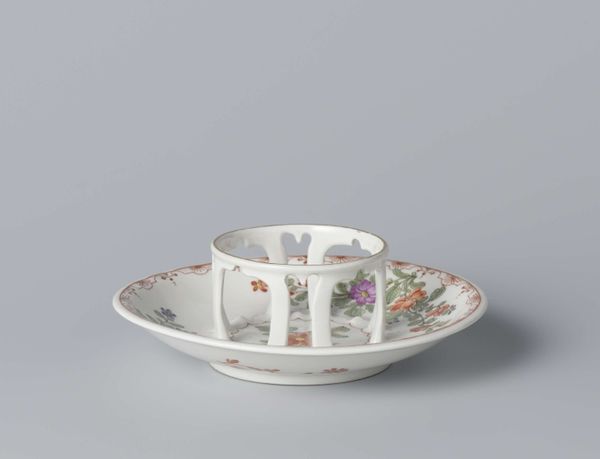
Dimensions: height 5 cm, diameter 8.1 cm
Copyright: Rijks Museum: Open Domain
Editor: Here we have a delicately painted earthenware lid, "Deksel," crafted sometime between 1777 and 1790 by the Porseleinfabriek Den Haag. It's such a quaint object, like something from a dollhouse, but those hand-painted flowers feel quite significant somehow. How do you interpret this work? Curator: I see more than just a pretty lid. This piece whispers of the Rococo era, a time when aristocratic taste heavily influenced art and culture. Floral designs, like we see here, were very fashionable. But let's consider the context: who was creating this? Who was consuming it? Rococo art, with its focus on beauty and decoration, often masked social inequalities and the labor exploitation required to produce these delicate objects. Editor: That’s a perspective I hadn't considered. So, the beauty is almost...deceptive? Curator: Perhaps "deceptive" is too strong, but it’s essential to remember that beauty is never neutral. Consider the cost of the materials, the labor involved in creating this object, the very specific market it catered to. Can we separate this pretty little lid from the complex web of class and commerce that surrounded its creation? Were the porcelain painters mostly women? Editor: I hadn't thought about the artisans. I'm seeing a complex intersection between the visual charm of the object and its social framework. Curator: Exactly. Understanding the political economy and the often-invisible labor behind luxury goods provides a critical lens through which we can understand art. What have you observed in the process? Editor: I've realised I was overlooking the artwork's social significance, getting lost in the aesthetics alone. The flowers now remind me of complex social history of production, rather than just beautiful patterns. Thank you.
Comments
No comments
Be the first to comment and join the conversation on the ultimate creative platform.
